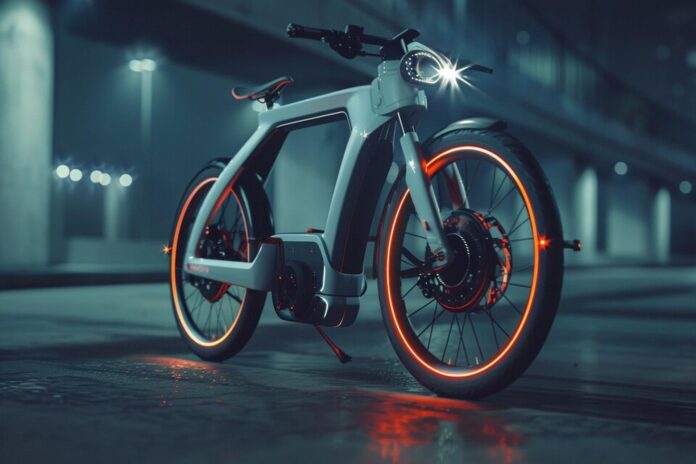Essential Maintenance Tips For Your Ebike
Maintenance is essential for a good bike ride. Proper maintenance improves performance and lifetime. Maintenance guarantees safety and dependability. A well maintained bike reduces maintenance costs. Ebike maintenance basics are covered in this article.
Maintenance begins with brake checks. Check brake pads for wear. Check cables for damage. If problems arise, adjust the brakes. Brakes must work properly for safety. Check gears and transmission. Clean the chain frequently. Use ebike specific lubricant.
This keeps gears moving smoothly. Replace worn gears quickly. Shifting concerns may be dangerous. Tires require care. Check tire pressure frequently. Underinflated tyres affect performance. Check for damage or wear. Replace tyres that exhibit substantial wear.
Improved riding pleasure with regular tyre maintenance. Electrical systems and lights are important. Check your lights before every ride. Check for loose or damaged connections. Night biking requires good electrical system maintenance.
Maintaining your bike requires cleaning. Dirt and grime damage over time. Clean with mild soap and water. Do not use harsh chemicals that might damage the frame or wires. Clean the bike periodically to keep it looking fresh.
The Importance Of Regular Inspections
Ebike maintenance requires regular checkups. Inspections detect issues early. It may prevent costly repairs. Checking your bike improves riding safety. Initial ocular assessment. Check the frame for damage. Look for corrosion dents and fractures.
Frame deterioration compromises safety. Address issues before riding. Now inspect all moving components. Make sure the chain works. Check derailleurs‘ alignment. Poor shifting might result from misalignment. Make sure the pedals are secure. Accidents may result from loose pedals.
Brakes are a safety priority. Check the brake pads for metal wear. Check cables for fraying. Brakes should work swiftly with little pressure. This provides safe stopping power when required.
Tires need frequent checkups. Check for holes and bulges. Check tread depth and replace if required. Under inflation might impair handling. Adjust tyre pressure per manufacturer instructions. Regular inspections make riding safer. You’ll feel better knowing your bike is in excellent shape. It is proactive bike maintenance. Your safety and bike performance rely on it.
Battery Care Tips For Longevity
The ebike battery is its heart. Proper upkeep may greatly increase its lifespan. Battery management affects performance. A well maintained battery means longer trips. Battery maintenance requires healthy habits. Learn the charging cycle. Avoid draining the battery before recharging. It may harm battery cells over time.
Best to recharge at 20-30 batteries. This simple practice extends battery life. Use the battery specific charger. Always follow manufacturer instructions. An improper charger might cause charging troubles. It may potentially permanently harm the battery. The charger must meet voltage standards.
Temperature affects battery health. Extreme heat or cold might hurt performance. Save your battery at mild temps. Do not expose the battery to direct sunlight or cold. This degrades battery chemistry.
Battery terminals need frequent cleaning. Dust and grime increase resistance. A clean connection optimizes performance. Use a gentle cleanser and cloth. Disconnect the battery before cleaning.
Check battery health routinely. Monitor charging for swelling or odd sounds. Odd indicators may suggest problems. Consider professional examination if issues emerge. Checking battery health may avert significant issues.
Cleaning Your Ebike A Step By Step Guide
Ebikes look and function better when clean. Regular cleaning reduces harm. Over time dirt may damage components. An easy cleaning routine can keep your bike in excellent shape. Get your cleaning goods. Mild soap water, a sponge and a soft cloth are needed.
A chain cleaner and degreaser will assist. Prep a bucket for dishwashing water. Remove batteries before cleaning. This avoids short circuits and harm. Keep it secure. Starting with water, rinse the bike to eliminate grime. Do not use a high pressure hose.
Dirt may enter sensitive places. Use mild soap and water to make a solution. Scrub the frame and parts lightly with a sponge. Look for dirt hiding fissures. Rinse well to remove soap. This is essential to avoid accumulation.
Next examine the chain and gears. Chain cleaners eliminate dirt. Scrub with an appropriate degreaser. Wash and dry before applying lubricant. This smooths your drivetrain. Wipe battery connections and electronics. Remove oil and grime. Cleaning improves electrical contact. Dry the bike with a soft towel. Keep it cold and dry.
Tire Maintenance For Optimal Riding
Ebike tyres need proper care. Tires directly affect riding. They impact safety, comfort and handling. Road concerns may be avoided with regular inspections. Understanding tyre maintenance is crucial.
Check tire pressure frequently. Maintaining proper tyre pressure improves performance. Use a trustworthy gauge for precise readings. Underinflated tyres deteriorate and are handled poorly.
Check tyres for damage. Check for cuts, bulges and nails. Safety may be compromised. Replace worn tyres. This includes worn treads. Traction is affected by tread depth particularly in damp circumstances.
Periodically rotate tyres. Even wear and tear is possible. Rotate according to manufacturer instructions. A balanced wear pattern extends tyre life. Also it provides constant riding handling. Tires should be cleaned routinely. Remove trash and stones.
Long term dirt accumulation causes harm. A gentle soap and water wash will do. Rinse and dry thoroughly. If you ride regularly in tough circumstances consider special tyres. Off road or knobby tires grip rough terrain better. Ensure your tyres fit your riding style. Choose the proper tyres to improve your experience.
Troubleshooting Common Ebike Issues
Over time e bike users may encounter complications. You may avoid headaches by troubleshooting. Knowing what to search for helps isolate issues. A little information may cure many problems. Common issues include batteries. If your bike doesn’t start, check the battery.
Check its charge and connection. Check terminal corrosion. Remove buildup for proper contact. Brakes not reacting is another prevalent problem. Check fluid level if the brakes feel mushy or unresponsive. Check brake pads for wear. Replace worn pads promptly for safety.
If your bike sounds strange. Drivetrain noises may signal a problem. Listen for pedal clicking or grinding. Check chain lubrication. Dirty chains make noises. Shifting issues might occur. If gears shift poorly check derailleurs. Check their alignment.
Gears might skip due to misalignment. Fixing the problem may need adjustments. Check tyres for flats frequently. Tire punctures may happen suddenly. Ride with a repair kit. Tire changing skills save time. Professional mechanics should be consulted if difficulties continue.



















